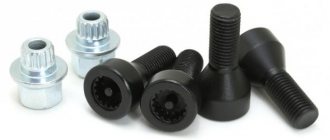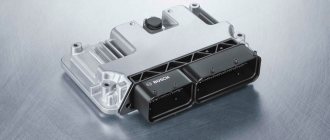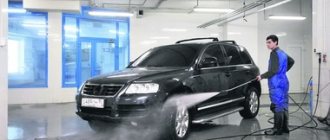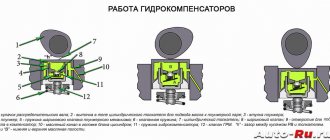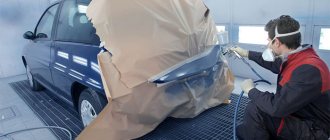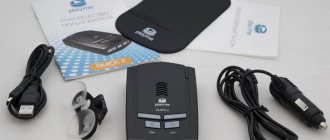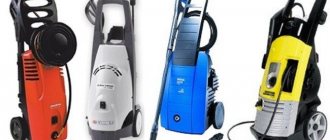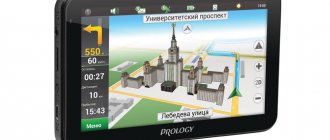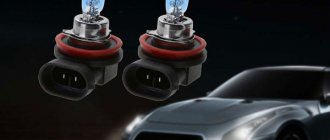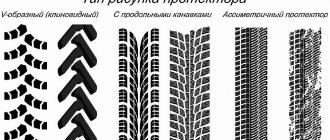Nowadays, for many, xenon installed on a car symbolizes prestige and high cost. And it’s not surprising, because all luxury cars are equipped with these lighting devices. Xenon gives the vehicle its individuality, thanks to it the car is unlikely to go unnoticed in traffic. When working on the style of his iron horse, few owners will not resort to the help of xenon. In addition to all the advantages associated with appearance, xenon lamps have practical advantages.
It is not recommended to purchase very cheap lamps, because this will subsequently lead to even greater expenses, since they last very little. Popular manufacturers ask much more for their lamps, but this price is justified. Also, when buying cheap lamps, you can run into a fake that will have nothing in common with real xenon. Let's figure out how to choose xenon lamps and which xenon is better.
Advantages and disadvantages
Any, even the most technologically advanced solution in the automotive industry has both obvious advantages and minor disadvantages. If you are thinking about installing xenon headlights on your car, you need to consider that they have the following disadvantages:
- A set of headlights costs a lot of money. It includes a block - a very expensive but necessary thing;
- Switching the high beam with a high frequency leads to a rapid reduction in the service life of not only the lamps, but also the entire headlight unit;
- If one lamp burns out, it is advisable to replace both;
- If you cheap out, then buy blinding xenon headlights, for the use of which all road users will hate you.
As for the advantages of xenon a, there are many of them:
- Due to the lack of heating of the glass, the headlights become less dirty;
- The lamp lasts longer than both an incandescent lamp and its halogen counterpart. Even budget xenon lasts a very long time;
- The service life of the glass is significantly increased since the xenon element does not heat up. This is a particularly important feature of xenon used in fog lights;
- The headlights are not afraid of shaking and even strong impacts. The fact is that such lamps simply do not have an incandescent filament (by its presence you can distinguish “pseudoxenon” from the real one). There is nothing inside the lamp to break off or burn out.
In the field of automotive lighting, xenon is the most advanced solution today. If you compare a halogen H7 with a xenon lamp, you will immediately notice that with an even higher quality of lighting, the second lamp consumes only 2/3 of the energy compared to the first. In addition, the soft blue light of xenon is perceived by the human eye better than bright white or yellow light - the likelihood of blinding is reduced many times over.
A standard xenon lamp lasts about 4 years. For example, 2800-3000 hours . An inexpensive halogen can last 180 hours, and the cheapest lamp from Bosch averages 500 hours. But at the same time, the price differences between a 180-hour light bulb and a 500-hour light bulb can be colossal. And this despite the fact that in halogen 40% of the energy goes to heating (a natural disadvantage of all incandescent lamps), and in xenon only 7% of the energy.
Reminder for choosing xenon
The following table will tell you how to choose xenon lamps for a car:
- Fog lights – 3500 Kelvin.
- Low beam headlights. The best option is 4300 Kelvin.
- Bright white light – 5000 Kelvin.
- Cool white light with a blue tint - 6000 Kelvin.
- Blue light – 7000 Kelvin.
- Violet light - 8000 Kelvin.
Based on the memo, we can conclude which xenon lamps are most often used, and if you are looking for xenon with the best characteristics, then the best choice is with a temperature of 4300-5000 Kelvin, since a higher indicator only allows you to make the car brighter.
What is color temperature
This topic has been raised more than once, both in specialized publications for drivers and on amateur websites. However, many drivers still ignore the main parameter of a xenon lamp - color temperature.
Spare parts for fiat 500
Windshield washer fluid
1.4 Abarth 312 A1.000
Spare parts for Lancia Thema
Fuel filter 2.0 ie 834 B.048
Experts can tell you in detail about the color (colorimetric) temperature. We will touch on the most important points. Firstly, it is measured in Kelvin (abbreviated: K). Secondly, the nature of light, its spectral properties and how it will be perceived by a person depend on temperature. More details here:
- A temperature of 4000 Kelvin has a pronounced yellow tone , and as the temperature rises up to 5000 Kelvin, a greenish tint can even be discerned;
- A temperature of 5000-6000 Kelvin means that the emission spectrum of the light source is closest to that of sunlight. Note that it is white with a slight yellowish tint - the human eye perceives such light well, but do not forget about the risk of blinding. Lamps with a temperature of about 5000 Kelvin are the brightest;
- Lamps with a temperature of 6000 Kelvin and above begin to “go” blue. Illumination drops significantly with increasing temperature, which is especially noticeable in rainy weather;
- It is very difficult to drive with lamps with a temperature of 7000-8000 Kelvin (bright blue and saturated, with a purple tint).
As practice shows, drivers should choose a xenon lamp with a temperature of 4300 or 500 Kelvin. Accordingly, it will be milky white or pure white light. If desired, you can take xenon at 6000 Kelvin - its color is also called “blue crystal”.
Results
So, to correctly choose which good xenon should be installed on your car, you should:
- Decide on the size of the ignition system (regular or slim).
- Decide whether you need a separate low and high beam system, or whether it is better to purchase a universal option (bi-xenon).
- Think about what to focus on - beauty or practicality, which for each type of xenon lamps differ in one direction or another depending on their color temperature.
Source of blinding light
By studying the catalogs of large and well-known companies, studying tests and collecting as much information as possible about xenon headlights from reviews, you will come to the conclusion that such a light source, in theory, should not blind drivers of oncoming cars. But why is this happening? Let's start from afar.
Xenon is an inert monatomic gas that has no smell, color or taste. It is absolutely safe for humans. The gas is pumped into a thick flask, which also contains two electrodes. A wiring harness and a so-called ignition unit lead to the bulb. And this is how it works:
- A voltage of about 25,000 Volts is applied to the contacts located inside the bulb at a short distance from each other;
- An electric arc occurs, burning in xenon (the inert gas mentioned above);
- The arc goes out. To support its combustion, an ignition unit is needed;
- The lamp burns with an even light of a certain temperature.
The logical question is: where did 25,000 Volts come ? Everything is very simple. Standard 12 Volt voltage from the vehicle's on-board electrical system passes through the high-voltage power supply, transforms to 250 Volt, and then the voltage is transferred to the capacitor. Next, in a special coil (essentially a miniature step-up transformer), the voltage indicator is transformed to the required value - 25,000 Volts in our case. Further arc burning is maintained by a stable 60-80 Volts.
Now let’s answer the question posed earlier: why does xenon blind? It's all about the nature of the arc. For example, in a branded German headlight the arc always burns at one point. In an inexpensive Chinese lamp, this arc is floating. Since the discharge is high-frequency, the arc moves at tremendous speed from one point to another and the lamp itself begins to “flicker.” As a result, Chinese lamps are actually very bright and can actually blind road users. In addition, when they work, you can see how the beam of light “breaks” in several places - the light is uneven, and if adjusted incorrectly (if the headlight can be adjusted at all), it has significant flare.
Xenon kit test
According to information published in some sources, specialists from the El Xenon campaign tested 12 sets of xenon automotive lighting. Such well-known brands as APP Digital Ultra Slim, MTF Light, Hella, SHO-ME xenon, Silverstone, XENOTEX and I-Mega were taken for the study. Of these, the four best, in the commission's opinion, manufacturers were identified.
The essence of testing and the principle of evaluation of participating kits are not disclosed. Those interested are immediately invited to familiarize themselves with the results. Why Hella didn’t make it to the TOP is also not explained. In our opinion, these ratings are worth taking into account, even if they are very subjective and were given to the equipment only based on experience with it. The final places were distributed as follows:
- MTF Light. Works great with the included Philips lamps. Has high reliability. The reduced number of ignition microcycles had a positive effect on the service life of the kit. The starting current is only 6 A, the rated operating current is slightly less than 3.5 A. Operable at temperatures from -40 to 100 ◦C.
- SHO-ME xenon. Very good price-quality ratio. Good light, long service life.
- APP Digital Ultra Slim. The price is high. This set is equipped with the smallest ignition unit and the same lamps as the less expensive SHO-ME xenon.
- XENOTEX. These kits have been produced for several years only in China. This is probably why they have such a low price. At the same time, the products sold under this brand are quite good. The ignition units operate quietly and quite quickly. The lamps provide rich, intense white light that does not tire the eyes.
Article on the topic: What is Antifreeze - composition, characteristics, purpose
Legal side of the issue
It is quite possible that refurbishing your car's headlights by replacing lamps will work out just fine for you. But you are unlikely to be able to prove this to the traffic police inspector.
Just a few years ago it was possible to legalize the replacement of incandescent lamps in car headlights with xenon ones. To do this, however, it was necessary to collect many documents and obtain a positive expert opinion. Now this has become simply impossible. On February 24, 2014, Order No. 1123 of the Ministry of Internal Affairs of Russia came into force. According to which car owners in our country no longer have the right to modernize and change the design elements of their vehicle.
According to lawyers, you have only one legal way to equip your car with xenon - install fog lights (FTL) designed for use with xenon lamps. This needs to be done correctly.
What about the luminous flux?
Without going into details and without studying the operating diagrams of various lamps, we will dryly quote the conclusions of automotive lighting experts:
- A halogen lamp can produce a flow of 1500 Lumens ;
- The xenon analogue produces 3000-6000 Lumens. If you come across a Chinese lamp in a store with the indicated 10-20,000 Lumens , then you should not believe the information - such headlights are used very rarely and are not particularly interested in end consumers. Real luminous flux: from 3000 to 6000;
- Ultra-modern LED lamps are closer in luminous flux to xenon than to halogen: 2500-4000 Lumens (but only if the devices have a special driver).
As you can see, xenon is bright, but at the same time dangerous, as it can blind oncoming drivers. However, this information about him is not enough for an intelligent choice. Let's continue studying the theory of automotive lighting.
Is pseudoxenon a new type of headlights or something else?
Today on the auto parts market you can find interesting offers for pseudo-xenon. No, this is not a xenon lamp at all. Pseudo-xenon is based on the use of conventional halogen lamps, which are coated with a composition that gives the light a bluish tint. In practice, the radiation is an unattractive mixture of yellow and blue.
The use of pseudo-xenon is undesirable as it can seriously impair visibility (especially in harsh weather conditions). The Germans created something similar to a real replacement for xenon lamps - Blue Vision lamps, which fall under all European standards, work noticeably more efficiently than classic halogen. But for a really good pseudo-xenon from the Japanese company IPF you will have to pay a lot of money. Pros: it is brighter than conventional halogen lamps and can be installed as a replacement without any problems.
Reviews about xenon manufacturers
In accordance with numerous reviews from car owners who use xenon, we have ranked the manufacturers of these lighting devices as follows:
- Philips (Netherlands) and Hella (Germany). Both of these companies produce the best xenon light sources, according to user reviews. They occupy one place due to the fact that it is difficult to determine which one is better.
- Osram (Germany). The only company that provides a four-year warranty on its products. She also made the first xenon lamps, which had the brightest light at that time and were used in film projectors.
- IPF (Japan). The company produces high-quality, but not cheap, products.
- Eagleye (Korea). Produces good quality products at an average price.
- IL Trade and MTF-Light (Korea). The products produced by the campaigns, with satisfactory quality, are in the budget price category. Perfect for inexpensive cars.
Why is bi-xenon interesting?
So, bi-xenon. The same principle of operation, the same gas, the same ignition unit. The differences with conventional xenon are hidden in the lighting implementation. Roughly speaking, a xenon lamp always shines at full capacity. This is usually used for low beam, and halogen for high beam. But bi-xenon is the functions of a head light in one relatively small lamp. It is the prefix “bi” that indicates to us that the device combines two functions.
It is difficult to unequivocally answer the question of whether dual xenon is better than regular xenon. Just imagine the design: ordinary xenon with a special screen (curtain) inside the light bulb, which is controlled by an electromagnet. Such a lamp is not much more expensive than classic xenon, but installation and modification of standard car lighting costs a lot of money.
Bi-xenon lamps and pseudo-xenon
If both the low and high beams in your car are provided by the same lamp, you will need not simple xenon, but bi-xenon. This will be more advisable from a security point of view. A bi-xenon lamp is an electromagnetic device with the help of which the lamp moves relative to the reflectors and becomes in positions corresponding to either high beam or low beam.
Bi-xenon lamp
A technology specially invented for those who want to save money called “pseudoxenon” has nothing to do with real xenon. The light in such lamps is not white-blue daylight, like xenon lamps, but yellow-blue. In normal lighting this is not so noticeable, but at night the parameters of such pseudo-xenon are much worse. The efficiency of such lighting equipment is very low, and most of the energy is released as heat. How to distinguish pseudo-xenon at first sight? A real one must include an ignition unit, while a fake one does not have one.
How to choose a xenon lamp
To make the right choice, a car enthusiast should adhere to several rules. Moreover, if the wrong choice of a conventional incandescent lamp does not particularly upset you, then you need to seriously fork out for a xenon analogue and a possible mistake will be expensive. Here's what car enthusiasts need to pay attention to:
- Lamp base . The easiest way is to unscrew the old lamp, go to the store with it and start choosing a xenon lamp there. If the standard headlight is halogen, then the lamp probably belongs to one of the following standards: H1, HB4, H7, H3 or H8 It is worth noting that this is not an axiom - in some cases a lamp with a different base may be needed;
- Ignition block . If you take the headlight complete with everything necessary for installation, then choosing a unit will not be a problem. However, this device can always be purchased separately. We will look into the issue of block selection a little later;
- Lamp power . Standard power: 35 or 50 Watt. The second option is also called a lamp with added brightness. A 35-watt xenon is sufficient for passenger vehicles, but SUVs can be equipped with a 50-watt lamp;
- Temperature . As already described, the best options are 4300 or 500 Kelvin. You can also take a lamp with a temperature of 6000 Kelvin, but keep in mind that its glow is not enough for comfortable driving on a wet road.
These are the most important points. Optionally, you could add the price of lamps to the list, but you will soon understand that the budget issue is closely related to which company’s products you choose.
Which is better to choose xenon for headlights
Which xenon lamps are best to choose?
It is better to choose between a color temperature of 4300 and 5000 K. Many people call them universal. If you install lamps with a temperature of 5000K in the headlights, then you should install a little less in the foglights, in this case it will be 4300K. Motorists also say that there is practically no difference between these lamps, but those that have a higher temperature are distinguished by a noble, cold light and are completely free of yellowness.
Which xenon lights up better on the roads at night? Many people prefer to opt for Philips products labeled 5000 K. This is because such lamps have a high level of brightness and a good luminous flux range.
But there is one significant drawback - such lamps literally blind the driver of an oncoming car at night, so automatic switching from high beam to low beam is required. Otherwise, a dangerous emergency situation will be created on the roads.
What to do if you want to put bright lights in your fog lights? Here you need to choose a light that would be ideal for illuminating the road in wet weather, on wet asphalt and in poor visibility. The ideal option is light that can easily break through a solid wall of rain and other precipitation.
Therefore, in such headlights you can install not only yellow, but also green xenon.
Which xenon should I put in reverse? It all depends on what color the car owner likes. You can choose the glow temperature starting from 8 thousand, but you can choose any color:
- Purple.
- Pink.
- Red.
- Gray-blue.
Such lamps shine dimly, their brightness is minimal, but due to the unusual light in the reversing lights they will be most noticeable.
It is better to choose xenon for low beam lenses with special care. Here, not only the brightness of the light is important, but also the ability to control the temperature so as not to overheat the optics and damage them. Therefore, for near lighting, lamps with a power of 35 W (W) are suitable and only if there is a lens. If you install a 50 W bulb here, the thermal effect can damage the inside of the headlight and it will have to be replaced.
Therefore, before answering the question of which xenon is better to install, you should definitely consult with a specialist, or visit car owner forums and read reviews about the products of a particular company.
What to consider when choosing an ignition unit
The first and extremely important point: there are no differences in the ignition units for bi-xenon and conventional xenon. Second: the color temperature is completely determined by the lamp, so if you have a block lying around for a 6000 Kelvin lamp, and you decide to install a 5000 Kelvin lamp, then feel free to use the existing block.
When choosing a new ignition unit, remember the following:
- Cheap analogues are not the best choice . It is better to take a branded element, since it differs from a cheap eastern analogue: high lamp ignition speed, low level of electromagnetic interference, which affects many electronic devices in the car, and high service life. In addition, budget units usually work poorly with original xenon (the brightness of the light will be noticeably lower);
- When choosing between a universal or standard unit, choose the second one . The guideline for choosing will be the existing xenon headlights - you should choose a unit from the same manufacturer and having the same technical indicators;
- There are “slim” blocks and blocks of standard sizes . They differ, as you already understood, in geometry. If there is not enough space in the engine compartment to install an element, then it is worth “trying on” a slim block - perhaps there is only room for it;
- The ignitor can be located inside the element or taken out . A remote igniter is much better - it ensures more stable operation of the equipment and completely eliminates electromagnetic interference. In addition, when a remote ignitor fails, it can be quickly replaced without touching the entire unit;
- If the car's on-board computer has a function for checking lamps, then you will have to buy a block with a blende . Built-in decoys work much better than those that are purchased separately and installed manually.
In general, selecting a block is very simple: you need to find a branded element, check its compatibility with optics and make sure that the block is certified. The last and very important question: which company should I buy the headlights and, accordingly, the ignition unit? Let's figure it out.
Don't rush to change
Now xenon lamps can also be purchased in the form of separate kits. But there is no need to rush to replace halogen headlights with them.
First of all, find out whether it is prohibited by law in your country to carry out such a replacement. In European countries, for example, it is generally prohibited to sell xenon kits for car conversions.
In the CIS countries the situation is also different. For example, in Russia it is prohibited to make any technical changes to external lighting devices.
Therefore, if you have a foreign car, and xenon lamps are already provided structurally, which means they are automatically adjusted and washed, then replacement with newer products is possible in this case.
And if you have an old Lada and the brightness of the light is not enough, then it is better to install more powerful halogen lamps. But the main thing here is not to overdo it.
After all, a lamp that is too powerful, for example, 100 watts, tends to get very hot, and this will have a detrimental effect on the plastic parts of the headlights, which can become deformed.
Example, Philips H4 X-treme Power halogen lamp.
Also, not every wiring, especially an old car, can withstand such a load.
Brand tour
One of the key points is the choice of xenon from a well-known manufacturer. This is a guarantee that the product you purchased will be of truly high quality, reliable and durable. So, pay attention to xenon lamps under the names of the following companies:
- Sho-Me (South Korea);
- Hella (Germany);
- Optima (South Korea);
- Silver Star (China);
- MTF Light (South Korea);
- Omegalight (China);
- Philips (Netherlands);
- Osram (Germany).
The best xenon is offered today South Korea . European lamps are also very good, but somewhat inferior to Korean ones. Hella and Philips are especially pleasing. True, the prices for their lighting equipment can be unpleasantly surprising. However, it is worth it: the light is soft, without “spots”, visibility is excellent, and when choosing a branded ignition unit, the arc in the lamp starts very quickly. The Chinese manufacturers mentioned above are the best of those whose products can be found in stores today.
If you choose an ignition unit, then you don't have many options. It is best to choose a unit from the same company as the lamps. However, in many cases the elements are interchangeable. The most interesting blocks are from the following companies:
- Hella (Germany);
- IL Trade (China).
The German block is expensive, but high quality and durable. Chinese, on the contrary, is not so reliable, but is inexpensive. If you are looking for a budget solution, then you should definitely pay attention to IL Trade. In all other cases, take the ignition unit from the same manufacturer whose lamps are already installed on your car.
Reasons for the difficulties of using technology
There are many reasons for this. The main ones are:
- a huge initial current pulse, which can reach up to 50 kilovolts;
- constant support of the required voltage during xenon operation;
- optimal external temperature conditions and much more.
The slightest change in any parameters and the headlights will not light up. Therefore, introducing a xenon lamp into a headlight so that it works without failures was not easy.
In any lighting lamp there is such an indicator as arc curvature. The straighter the arc, the better. In conventional lamps, the arc, as you noticed, is straight, but in xenon lamps it has a “C” shape, which does not have the best effect on the efficiency of its operation and the quality of lighting.
Unfortunately, this problem has not yet been solved, but in xenons produced by Philips, this indicator is the lowest, that is, the lighting quality is better.
It will also not be a surprise to many if they learn that almost all gas-discharge lamps, which include xenon lamps, produce ultraviolet radiation.
The intensity of its radiation is very low, but after a while, about 2-3 years, its effect on the surrounding plastic manifests itself in the form of the appearance of yellow spots.
Therefore, to solve this problem, protective quartz glasses began to be installed on many xenon lamps, thanks to which almost all ultraviolet radiation is retained.
One of the first companies to produce xenon with quartz glass was Philips. One of its main advantages over halogen counterparts is its long service life, which is usually 4 times longer.
POPULAR WITH READERS: How to make anti-rain with your own hands
As a rule, the service life of a halogen lamp is 700 hours, and a xenon lamp is about three thousand.
Conclusion
Xenon headlights are an expensive pleasure that will pleasantly surprise even experienced car enthusiasts. Since a significant proportion of road accidents were caused due to poor visibility, all motorists should consider purchasing brighter lights, new and reliable parking lights, fog lights and DRLs. As for xenon headlights specifically, they, despite their high cost, will be a worthwhile purchase: they last longer, shine further and brighter, and can be used even in the harshest conditions. However, you should give preference to expensive Korean lamps, otherwise you will not find significant differences between a good standard halogen and a just purchased budget xenon.
